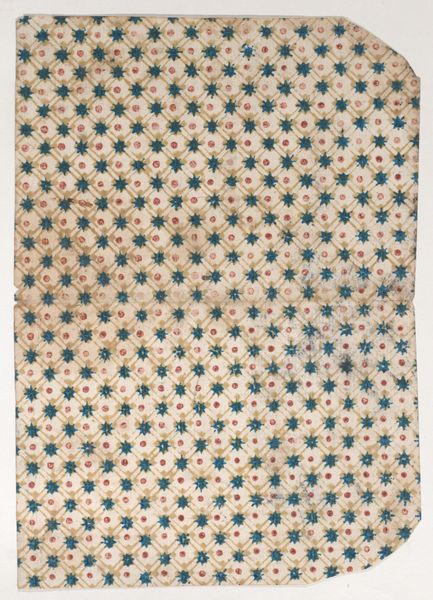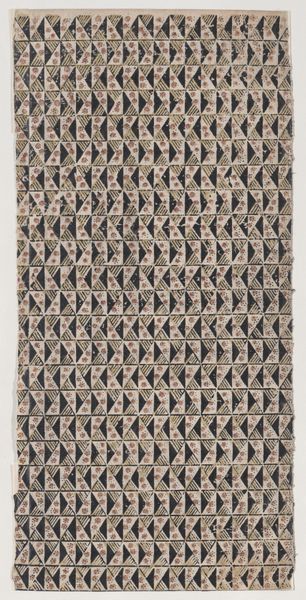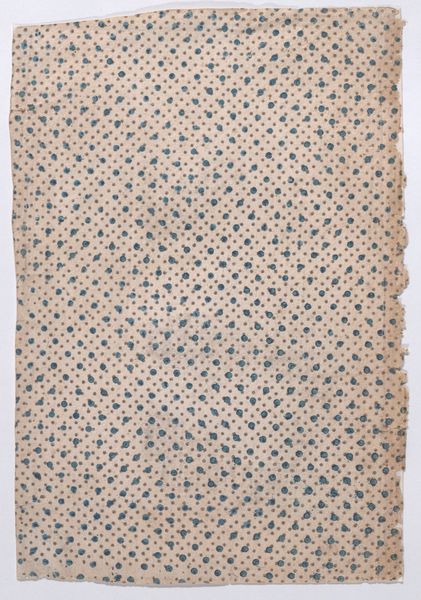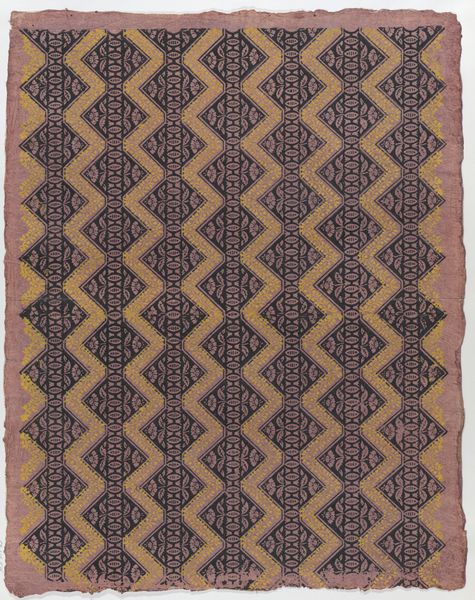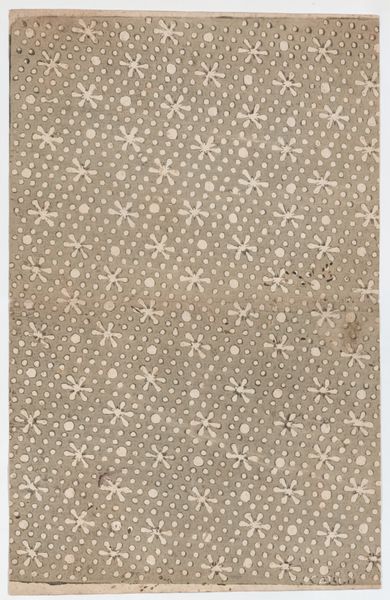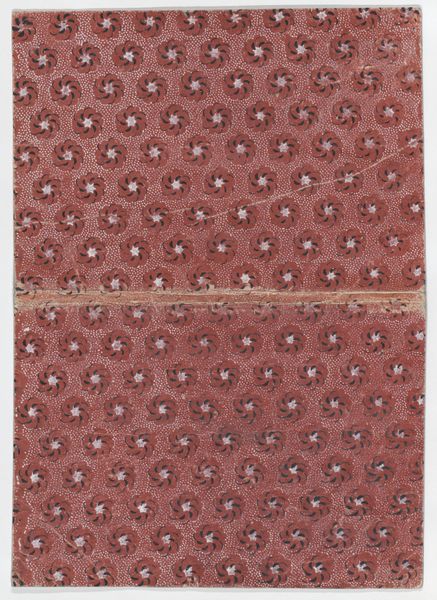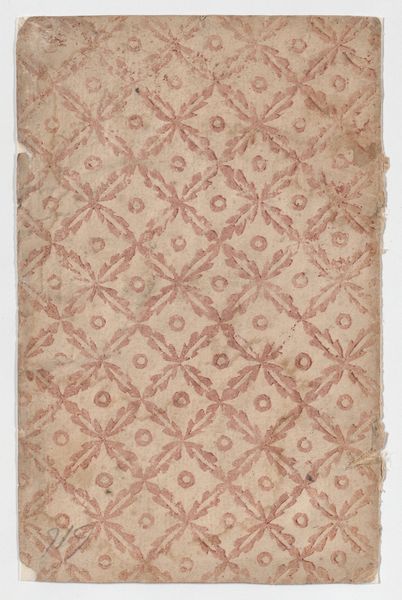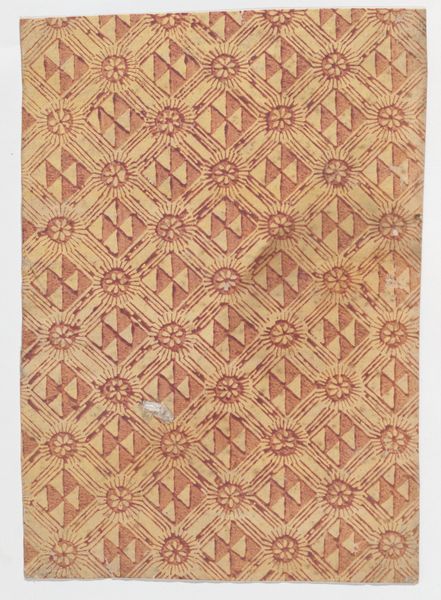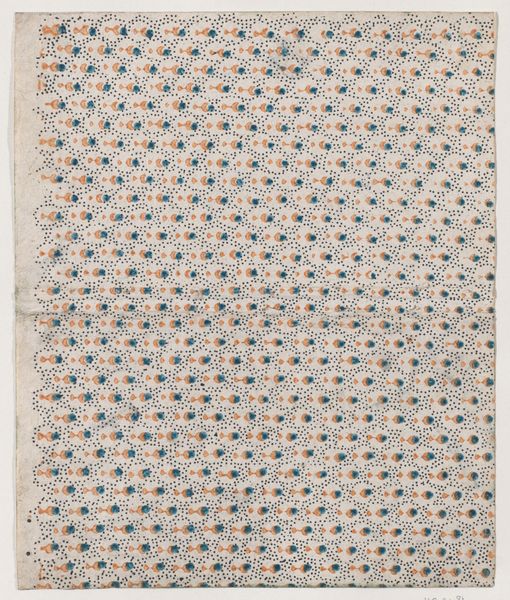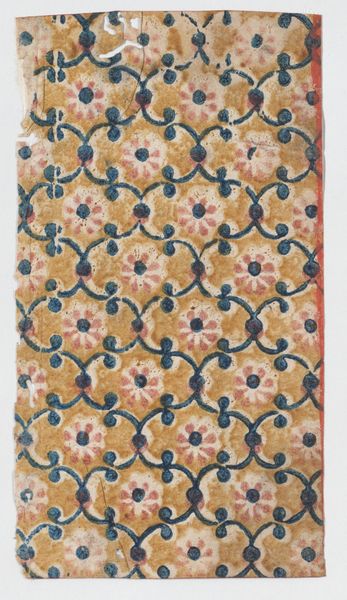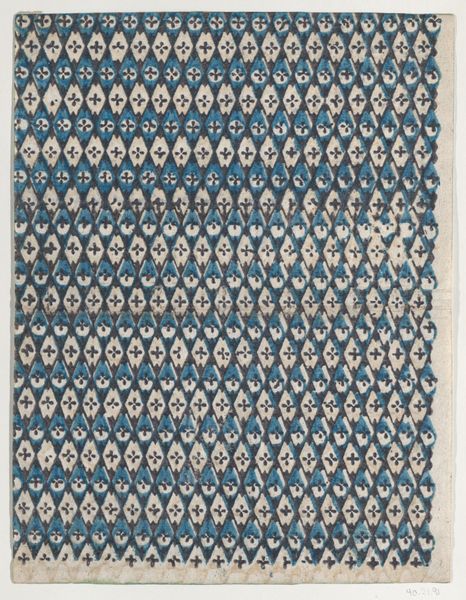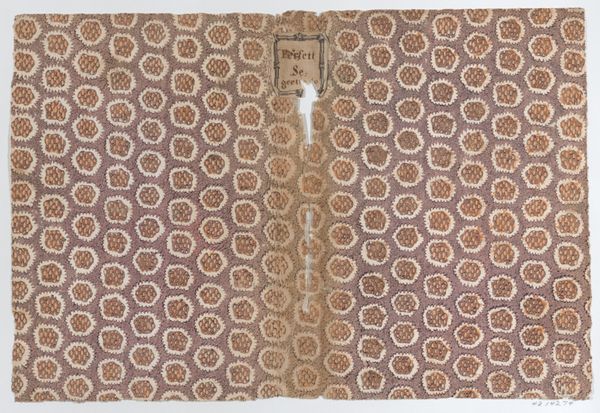
drawing, paper
#
drawing
#
paper
#
geometric
Dimensions: Sheet: 14 3/16 × 18 1/8 in. (36 × 46.1 cm)
Copyright: Public Domain
This is a sheet with an overall geometric pattern of unknown origin, found at the Metropolitan Museum of Art. The design features tessellated rhombuses and squares, each adorned with a four-petal rosette. Such patterns, seemingly simple, echo through the corridors of time. Consider the rosettes; they are floral motifs which have been symbolic across cultures. From ancient Mesopotamia, where they symbolized divine power, to their later use in Hellenistic and Roman art where they signified beauty, prosperity, and love. In the medieval era, particularly in religious contexts, the rosette often represented the Virgin Mary, the "rose without thorns." The rosette motif has evolved through time and cultures, yet, it persists in our collective memory. Its persistence suggests a deeply rooted connection to nature and spirituality. The continuous repetition of these patterns might engage viewers subconsciously, creating a sense of order and harmony in the cosmos, echoing our innate quest for understanding and connection.
Comments
No comments
Be the first to comment and join the conversation on the ultimate creative platform.
